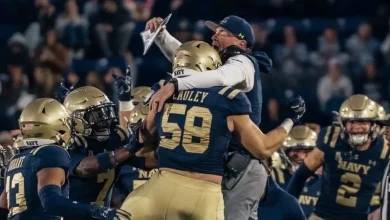What happens if the Supreme Court strikes down Trump’s tariffs? More tariffs

President Donald Trump told reporters Thursday it would be “devastating for our country” if he lost a Supreme Court case that could invalidate his administration’s most far-reaching tariffs.
That verdict appears increasingly likely after Wednesday’s Supreme Court hearing, where liberal and conservative justices raised concerns about their legality.
If that’s the case, “we’ll have to develop a game two plan,” Trump said.
That plan, in effect, could end up curbing his tariff-wielding powers on paper, given the suite of tariff authorities he’ll continue to retain.
Trump, unlike any prior president, has been relying on a federal law known as the International Emergency Economic Powers Act to enact higher tariffs.
That includes all the so-called “reciprocal” tariffs that have raised duties as high as 50% on key trading partners, including India and Brazil, and as high as 145% on China earlier this year. Collectively, the tariffs have brought in nearly $90 billion in payments from American importers as of late September, according to US Customs and Border Protection data.
Virtually no one, not even the attorneys who argued against the Trump administration at the Supreme Court, expects him to call it quits on tariffs, a key part of his overarching economic agenda.
“We would expect the administration to use other authorities to impose substantially similar tariffs,” Goldman Sachs economists said in a note earlier this week. “Large trading partners would likely see little change,” they added.
The only thing that would change is what form the tariffs take.
Here are some of the Trump administration’s options:
This law allows a president to levy a tariff of up to 15% for a maximum of 150 days to address “large and serious United States balance-of-payments deficits.” That would occur when the value of a country’s imports far exceeds that of exports, also referred to as a trade deficit.
After the 150-day period concludes, the levies can only continue if Congress signs off on them.
But, unlike other laws the president can cite to enact higher tariffs, Section 122 doesn’t require an advanced investigation to be initiated, giving Trump the ability to immediately put new levies on imports.
This gives the president the authority to impose higher tariffs on national security grounds. It can only be used to target specific sectors and requires an investigation to be launched by the Commerce Department before tariffs can be imposed.
The across-the-board tariffs Trump imposed during his second term on steel, aluminum, copper, lumber, furniture, cars and car parts were all the result of 232 investigations. Trump also ordered investigations into several other imports, including critical minerals, semiconductors, medical supplies and robotics.
This allows the US Trade Representative to investigate countries potentially violating other nations’ trade agreements or practices in a way that is “unjustifiable” and “burdens or restricts” US business.
Last month, USTR Jamieson Greer launched an investigation into whether China is adhering to the terms of a trade agreement Trump brokered during his first term.
As has been the case with other Section 301 investigations, it could take weeks or even months for it to lead to tariffs because of the lengthier process involved, including a period for public comment, compared to recently imposed tariffs.
But, unlike Section 122, there’s no limit to the level or duration of tariffs arising from Section 301 investigations.
While never implemented by any president, Trump could use this law to impose tariffs of up to 50% on countries’ imports if he believes they are engaging in trade practices that discriminate against the United States. Doing so, however, could violate World Trade Organization agreement terms and prompt steep retaliation from impacted countries.




